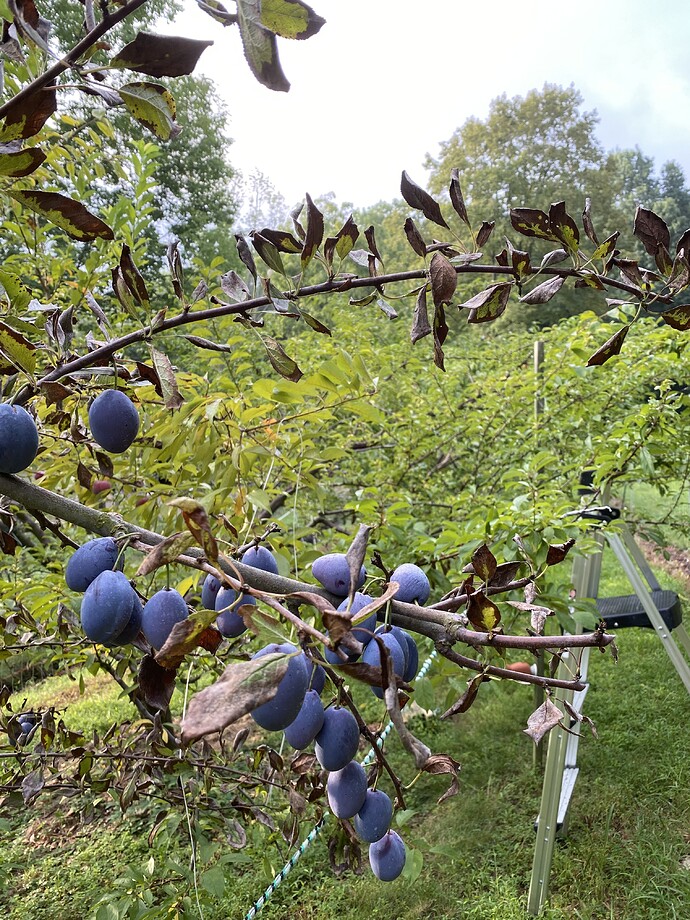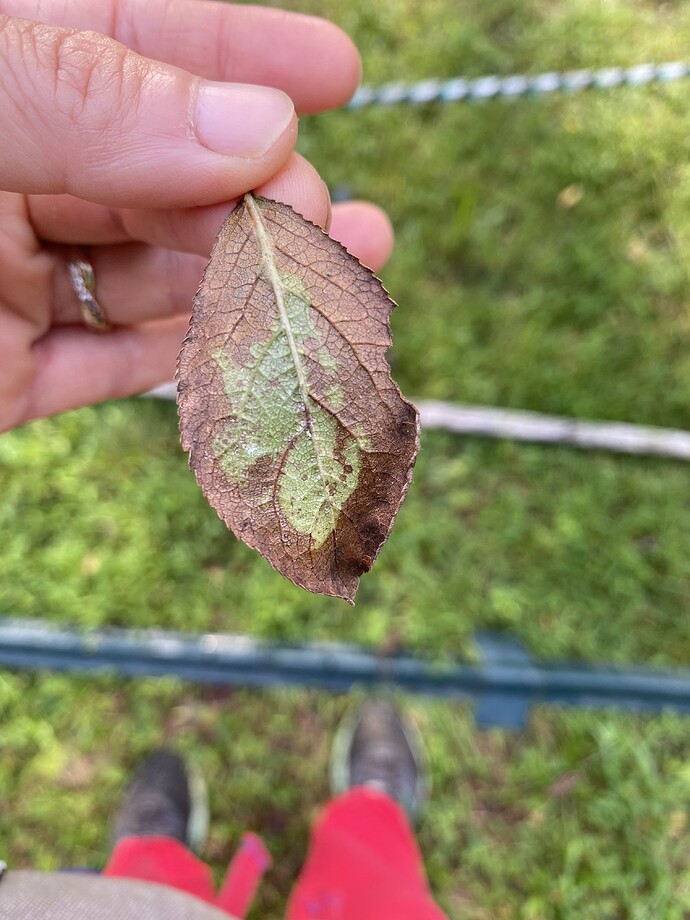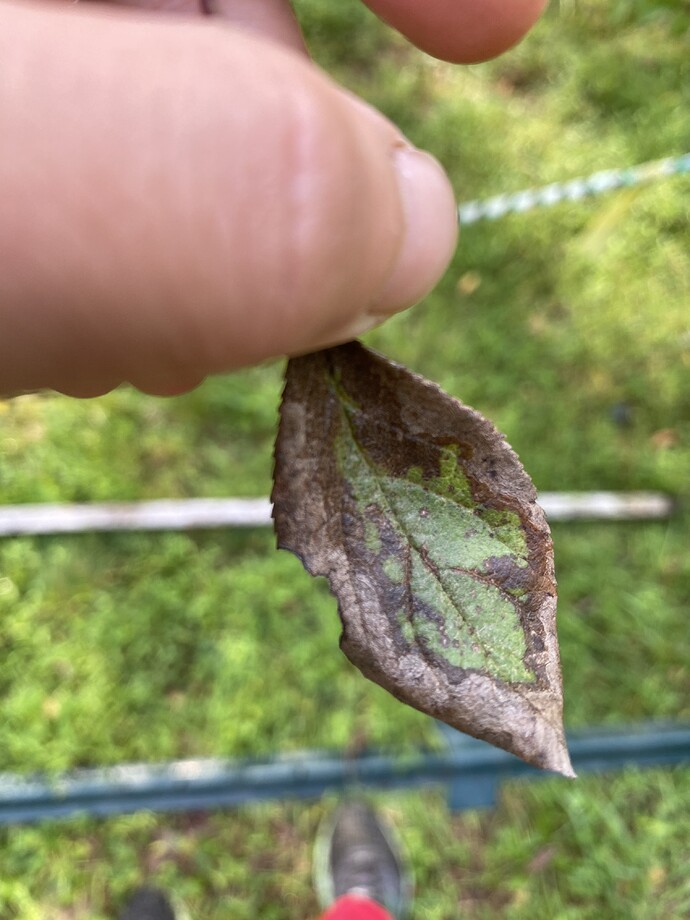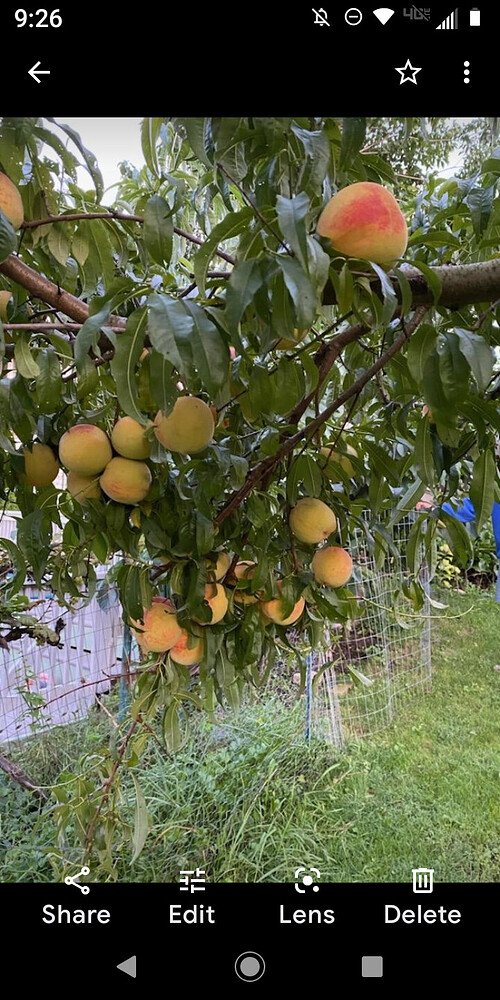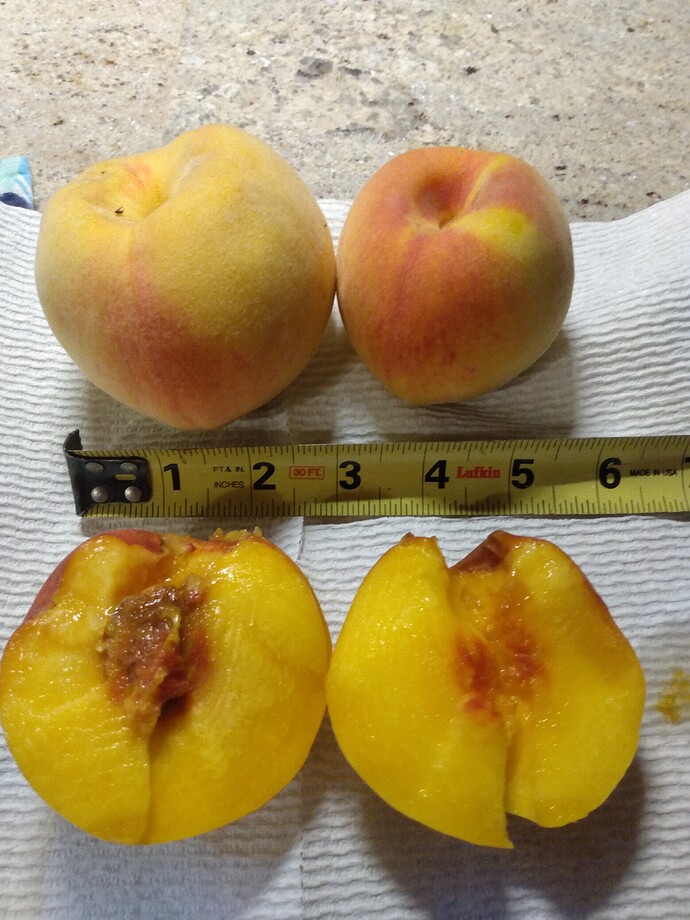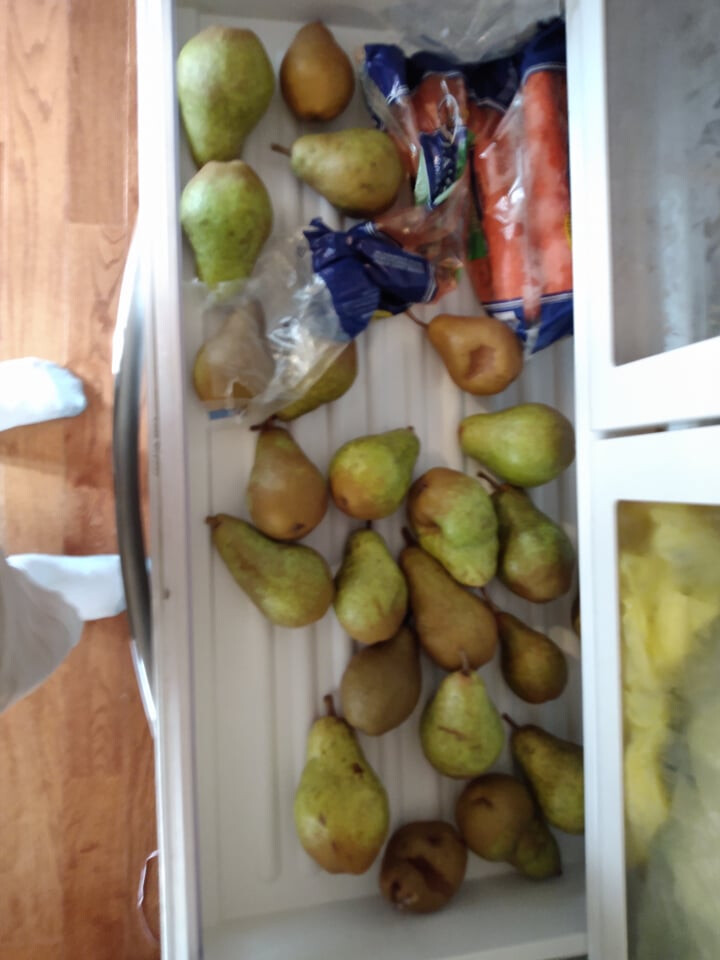Meader Persimmon- Anyone have it that can rate it’s size and taste? Would you plant it again?
Hi! Can anyone tell what happened to my Stanley plum tree? It was planted in 2013 in Poconos, PA. It has been producing for a couple years now. I first notice this burning looking leaves about 3 weeks ago. I thought it was from touching electric fence. I cut that section off but now I found these. Even worse and affecting about 30% of the tree, or more.
Did you happen to spray it? So many of the sprays for plums have ‘Stanley Warnings’. I noticed that when I added Stanley scions to some of my existing plum trees that I started spraying this year.
I did. The new spray that I used just recently (last 2 sprays) is Captan. Another new spray for this year is Assail. The rest is the same as previous years such as Indar and Avaunt. I will check those two new sprays for “Stanley warning.” Thank you.
Yes . . . when they list the fruits that the spray is recommended for, it usually says “Plums, except for Stanley.” ? I don’t know why this is. Maybe just ‘delicate’?
I googled and found out. It’s Captan!
“…captan may result in leaf injury on Stanley”
“Sprays containing captan or propiconazole may cause leaf injury on Stanley plum”
Here are the links:
And Captan was the only one that I used about a month ago and I never used before. I think I used it twice! Oh well, lesson learned. Thank you PomGranny.
Thanks, Evi, for those links.
I am careful (maybe overly so) with Pears, too. They are ‘shrinking violets’ it seems, when it comes to the sprays that take care of problems on other plants. Anyone want to chime in on this ?
I have wanted to spray for fireblight - as a preventative measure - but never did because I was afraid I’d do more damage than good. Luckily I didn’t end up with fireblight problems this year, after cutting out a lot of damage last winter, on two new trees. Bartlett and Anjou. I really expected it would ‘come back’, but it didn’t. I grafted new varieties to both of those, even the central leaders, leaving only one or two scaffolds that appeared to be very healthy. Fingers crossed - they are still OK.
Pictured are peaches from big box store. Asking for help with ID.
Very yellow and meaty.
Maybe another week till ripe…very much a clingstone. Heavy bearing tree.
zone 6b…Sept 6
thanks!
I’ve sprayed the following on Pears with no problems: Captan, Imidan, Kocide 3000, Mycoshield, and oil (mineral based).
Thanks, Andy. I don’t have fruit yet, on any of my pears. But, I would have liked to spray them a bit . . . especially a fireblight preventative. Last year it seemed to damage leaves. They grew back . . . but I was concerned I’d done some major damage.
And maybe next year I will see some fruit forming - and definitely will want to try to protect it.
I should have stated: Copper and Oil I do as dormant sprays.
Any idea what kind of pears these are? I tasted one that was half-rotted on the ground (part of the good half) and it was sweet with no grit. I got them from a very neglected tree. There were bushels of pears that the bees had already ruined. I used an apple picker to grab them from high branches. There must have been at least a couple of bushel’s worth wasted. I’d guess Bartlett but some are fully russeted and look more like Bosc.
Holy crap. Those saddleback caterpillars are painful as H-E-double hockeysticks!
Couple of years back, I had a hatch of them on a containerized redbud here in my potted nursery plant area… brushed up against them and immediately knew what hit me(I’d had encounters with them before)… even tiny little ones pack a wallop.
So germinated a few Ume seeds a few months ago and have been growing them in pots over the second half of the summer and the fall. Now that things are getting cold, I’m trying to figure out what to do with them. They seem very small and I don’t know if they have enough “growth” to survive the winter. How do I know if I should bury the pots in the ground to overwinter or bring them inside and just keep them outside in subsequent winters?
First year seedlings, I would bring them to garage if it gets really cold.
Very good suggestion. Being in pots makes the rootstock very susceptible to freezing and damage.
As I lay the groundwork for attempting my first apple grafts to an Indian Magic crabapple next Spring, two questions started buzzing in my brain…
1 - Why does no one offer crabapple rootstocks for apple grafting, seeing they have a reputation for better disease resistance than Malus domestica?
2 - Do the rootstock sources use their “secret” names, like M111, B-9 and G.202, to keep the rubes from just growing a named variety, or because those rootstocks on their own bear inferior fruit?
Rick
The rootstocks you mention were developed at different “labs/research centers” for their properties OTHER than the fruit they bear.
At times, I toyed with the idea of letting some set fruit but there are too many proven varieties I like to waste the time
Mike
I recently recommended Swamp Crabapple for someone growing on wet soil. Here it is offered by Burnt Ridge: Pacific Crabapple | Native Deciduous Trees |-Burnt Ridge Nursery One thing to keep in mind is that these are probably seedlings with uncertain characteristics for the scion growing on top. With clones, you know what you get. I am not aware of any specific variety/clone of crab rootstock.
Wild Crabapples can influence the fruit of the grafted scion. They have been know to raise the tannin levels of a scion. Your desert apple graft might produce cider apples.
Crabapple (and other) Rootstock’s Influence on Flavor - Cider - Growing Fruit

